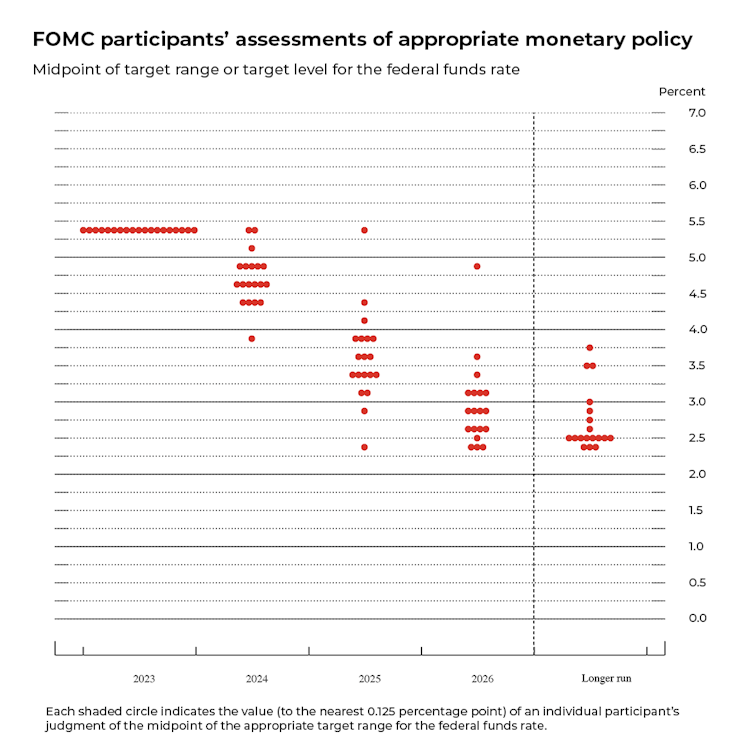Interest rates will eventually fall but it's a bit early for mortgagees to break out the champagne
- Written by John Hawkins, Senior Lecturer, Canberra School of Politics, Economics and Society, University of Canberra

Suddenly the talk in global financial markets[1] has spun from “when will interest rates next rise?” to “how soon before they fall?”.
Some commentators are flagging the shift as a “pivot party[2]”.
This change has been most prominent in the United States. It was prompted by the Federal Reserve, the US equivalent of the Reserve Bank of Australia, releasing its latest “dot chart”. This shows most members of its policy-setting Federal Open Market Committee expect their interest rate would be lower by the end of 2024.
References
- ^ global financial markets (www.ft.com)
- ^ pivot party (www.youtube.com)
- ^ US Federal Reserve (www.federalreserve.gov)
- ^ CC BY-SA (creativecommons.org)
- ^ review of the Reserve Bank (rbareview.gov.au)
- ^ national accounts (www.abs.gov.au)
- ^ news from the labour market (www.abs.gov.au)
- ^ mid-year (theconversation.com)
- ^ minutes (www.rba.gov.au)
- ^ Statement on the Conduct of Monetary Policy (www.rba.gov.au)
- ^ Reserve Bank review (rbareview.gov.au)
- ^ commentators have interpreted (www.afr.com)
- ^ forecast for inflation (www.rba.gov.au)
- ^ The 7 charts that show Australians struggling as saving falls to near zero (theconversation.com)
- ^ February 5-6 (www.rba.gov.au)
- ^ Andrew Hauser (theconversation.com)
- ^ Sarah Hunter (www.rba.gov.au)
- ^ Reserve Bank review (www.theguardian.com)
- ^ average loan size of around A$600,000 (www.abs.gov.au)
- ^ Will the RBA raise rates again? Unless prices surge over summer, it's looking less likely (theconversation.com)

















